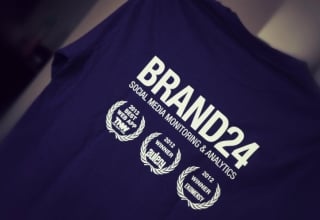Customers for some reason do not buy blindly products, although marketers are unsure as to their acceptance. The reasons for this state of affairs and the ways of overcoming customer resistance discuss the example… robotics and automation.
Market news are at risk, like any other venture. However, some technologies waited decades for his time, and when they saw the light of day, millions of people fell pale fear. Consulting firm McKinsey has prepared competitions, which are likely to become extinct, replaced by robots. Unfortunately, it is not about the automation of the production line, or space flights. The potential of automation for all occupations.
almost half (47%) pharmacists can perform actions robots. 69% truck and driver activity 72% professional tasks pilots are able to handle existing technologies. They have less potential automation of activities of doctors (23%), nurses (29%) and governors (25%), at least in the US, wherein underwent. What is important, calculated, that can automate 74% work in fast - food outlets, which employ in the US 3 millions of people. Meanwhile, robots and automation technologies are selling well. Ensured the success of m. in. Polish e-commerce industry.
Returning to the topic of innovation, disaster affects 40-90% cases, depending on the category. It is difficult to question some ideas advantage over current solutions, for example,. impersonal taxi, which will take us safely, the shortest route to the address indicated, and do not cheat on the bill. After all, the road to rule the hearts and wallets of customers is far.
Change costs
For marketers the cost of the design and implementation of new products are huge. Yet decades have passed since the, when automation "walked" from factory to consumer uses. In one moment all future users of these new technologies, series of products and services will be saddled with costs. Intuitively, we think about the economic costs of switching to, about transaction fees, costs of learning, costs of aging current technology.
The most expensive, however, are psychological costs, related to the change behavior. Customers appreciate the above benefits of the currently available products, than the benefits of the products available. How does it happend, that the products are rejected, although thanks to them would live better?
Psychology gains and losses
The reasons for this state of affairs we are looking not only at the economic value of the products themselves, but in people's minds. With the help comes psychology of behavior change.
Benefits and losses – unit in a complex manner rate options, you have a choice on the market.
- People perceive the attractiveness of options to choose from based on their subjective value, perceived.
- Consumers evaluate new products including its reference point, that is, the, what they have or that, which benefits.
- People see each upgrade (with respect to its reference point) the benefits, and any deterioration as a loss.
- People feel a lot more losses, than comparable size advantage (tw. aversion to losses).
The effect of the – consumers are much more appreciate it, what they have, although they could give it up, than, I do not have, although they could get it.
The tendency to maintain status quo – giving up something, what we already have seems to be a painful loss and reduces the desire to change. This trend eventually gaining momentum, and most people are not aware of the existence of behaviors associated with the effect of having a tendency to maintain and status quo.
Suppose, that we want to automate pharmacy.
- Innovation and change behavior
Success in accepting innovation depends on exchange transactions. When we give the benefit of the consumer, it will be seen as a profit. When we take him to the existing benefit, take this as a loss. Patients would benefit from shorter time and would take their service. Pharmaceutical care and lose the opportunity to talk with fellow master of.
- Consumers and behavioral change
Consumer products owned or regularly used by them become part of ownership. Thus, innovation is evaluated in terms of losses and benefits to existing products. Reliable checking prescriptions, recommendation substitutes - these options are treated as status quo. Consumers overestimate the losses almost tripled, So there is no acceptance of innovation, which does not significantly exceed the losses.
- Companies and behavior change
Marketers are willing to work in favor of new products. Innovators work because in the world, where innovation is the point of reference. They are so confident, that the new product works, They recognized the need for it and are aware of the weakness of existing options.
Originators may therefore overestimate the benefits of new innovations. The result is a mismatch between the, what they think innovators, and what you really want consumers. Microsoft has produced about your tablet 2001 r., but the market dominated by the iPad. Apple has set for the mobile system for consumers, and not a smaller version of a PC.
What kind of change you would expect from consumers?
The trick is to avoid conflict, when a company creates value by changing the product. So it is best to translate the value to the customer the benefit of the company, minimizing the change in the behavior of.
Helpful becomes the matrix, which is sufficient to identify the location, where is our innovation. Depending on the dynamics of change can be distinguished 4 types of innovation. All this, to determine the probability of acceptance of new products by customer, as well as the time and effort needed for this acceptance.

Overcome the resistance of buyers
A significant number of innovations even forcing significant changes in consumer behavior. Smartphone with access to the Internet has changed the way of communication between people, a personal computer revolutionized the job. Automation trend is inevitable, However, analysts point out, that the machines fail in several areas. Creativity and detecting emotions are extremely difficult to produce plastic and are a specialty of the Team grey tree.
A number of means, to deal with customer resistance. Whatever, in which the matrix is a place your product or technology, in grey tree gladly we will develop an effective plan to dispel consumers' concerns.
Source:
- http://www.businessinsider.com/jobs-most-likely-to-become-extinct-due-to-robots-2016-3
- John T. Gourville :reluctant buyer, enthusiastic seller ", HBR 10/2006








